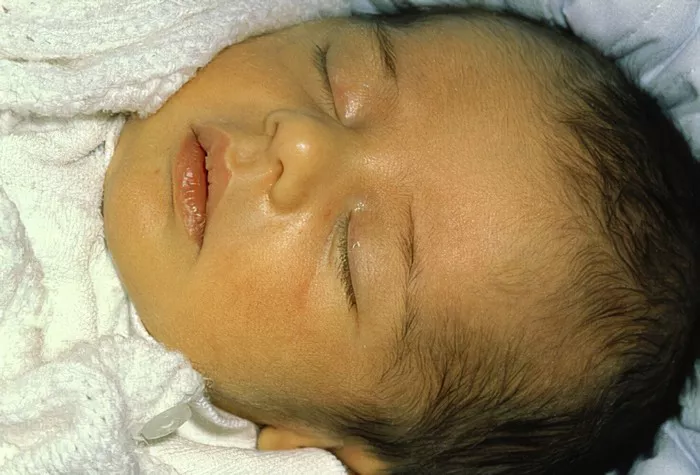Newborn jaundice is a common condition. Many parents worry when they see a yellow tint in their baby’s skin or eyes. Understanding when jaundice goes away can help ease those worries. This article will discuss the timeline for jaundice, factors affecting its duration, and when to seek help.
What Is Newborn Jaundice?
Jaundice occurs when bilirubin builds up in the blood. Bilirubin is a yellow substance produced when red blood cells break down. Newborns have higher levels of bilirubin because their livers are still maturing. Most jaundice cases in newborns are harmless and resolve on their own.
The Timeline for Jaundice
Jaundice usually appears within the first week of life. Here is a general timeline for when jaundice typically resolves:
1. Physiological Jaundice
Physiological jaundice is the most common type. It usually appears around the second or third day after birth. The peak bilirubin levels are often reached by the fifth day. Most healthy newborns begin to show improvement by the end of the first week.
2. Breastfeeding Jaundice
Breastfeeding jaundice can occur in breastfed babies. It often appears in the first week as well. This type of jaundice is usually due to insufficient milk intake. It can last longer than physiological jaundice if feeding issues are not addressed. With increased feeding, jaundice typically resolves in about two weeks.
3. Breast Milk Jaundice
Breast milk jaundice can appear later, usually after the first week. It is caused by substances in the mother’s milk that can interfere with bilirubin processing. This type of jaundice can last longer, sometimes up to three months. However, it is generally harmless and resolves without treatment.
Factors Affecting Duration
Several factors can affect how long jaundice lasts in newborns. Understanding these factors can help parents know what to expect.
1. Gestational Age
Premature infants are at a higher risk for jaundice. Their livers may not be mature enough to process bilirubin efficiently. As a result, jaundice may last longer in preemies compared to full-term babies.
2. Feeding Practices
Proper feeding is crucial for managing jaundice. Newborns should feed frequently, either through breastfeeding or formula feeding. If a baby is not getting enough milk, bilirubin levels can rise. Addressing feeding issues promptly can help reduce jaundice duration.
3. Blood Type Compatibility
If there is a blood type incompatibility between the mother and baby, jaundice may develop more quickly. Conditions like Rh incompatibility can lead to faster breakdown of red blood cells. This can result in higher bilirubin levels and longer-lasting jaundice.
4. Underlying Health Issues
Certain health problems can also affect jaundice duration. For example, infections or metabolic disorders can impair the liver’s ability to process bilirubin. In such cases, jaundice may take longer to resolve.
When to Seek Medical Attention
While most cases of jaundice are harmless, there are times when parents should seek medical help. If jaundice appears within the first 24 hours of life, it is essential to contact a healthcare provider.
Other signs that require medical attention include:
A significant increase in the yellow tint of the skin or eyes.
Poor feeding or lethargy.
High-pitched crying or unusual behavior.
Jaundice lasting beyond two weeks.
If any of these symptoms occur, parents should consult a doctor. Early intervention can help address any underlying issues.
Treatment Options
Most cases of newborn jaundice resolve without treatment. However, if bilirubin levels become too high, medical intervention may be necessary. Common treatments include:
1. Phototherapy
Phototherapy is the most common treatment for high bilirubin levels. The baby is placed under special blue lights. These lights help break down bilirubin in the skin. Treatment usually lasts for several hours to a few days, depending on bilirubin levels.
2. Exchange Transfusion
In severe cases, an exchange transfusion may be required. This procedure involves removing the baby’s blood and replacing it with donor blood. It is a more invasive treatment but is effective in quickly lowering bilirubin levels.
3. Hydration
Ensuring that the baby is well-hydrated is crucial. Frequent feeding helps keep bilirubin levels down. Breastfeeding or formula feeding should be encouraged to promote hydration and overall health.
See also: Why Is Phototherapy Used for Jaundice?
Conclusion
Newborn jaundice is common and usually resolves on its own. Understanding when jaundice typically goes away can help alleviate parental concerns. Most jaundice cases improve within a week, while some may last longer. Factors such as feeding practices, gestational age, and underlying health conditions can influence duration.
Parents should monitor their baby for signs of jaundice and seek medical attention if necessary. In most cases, timely feeding and care are all that is needed. With proper attention, jaundice can be managed effectively. Always consult a healthcare provider if there are any concerns. By staying informed, parents can ensure their newborn’s health and well-being.
Related topics:


